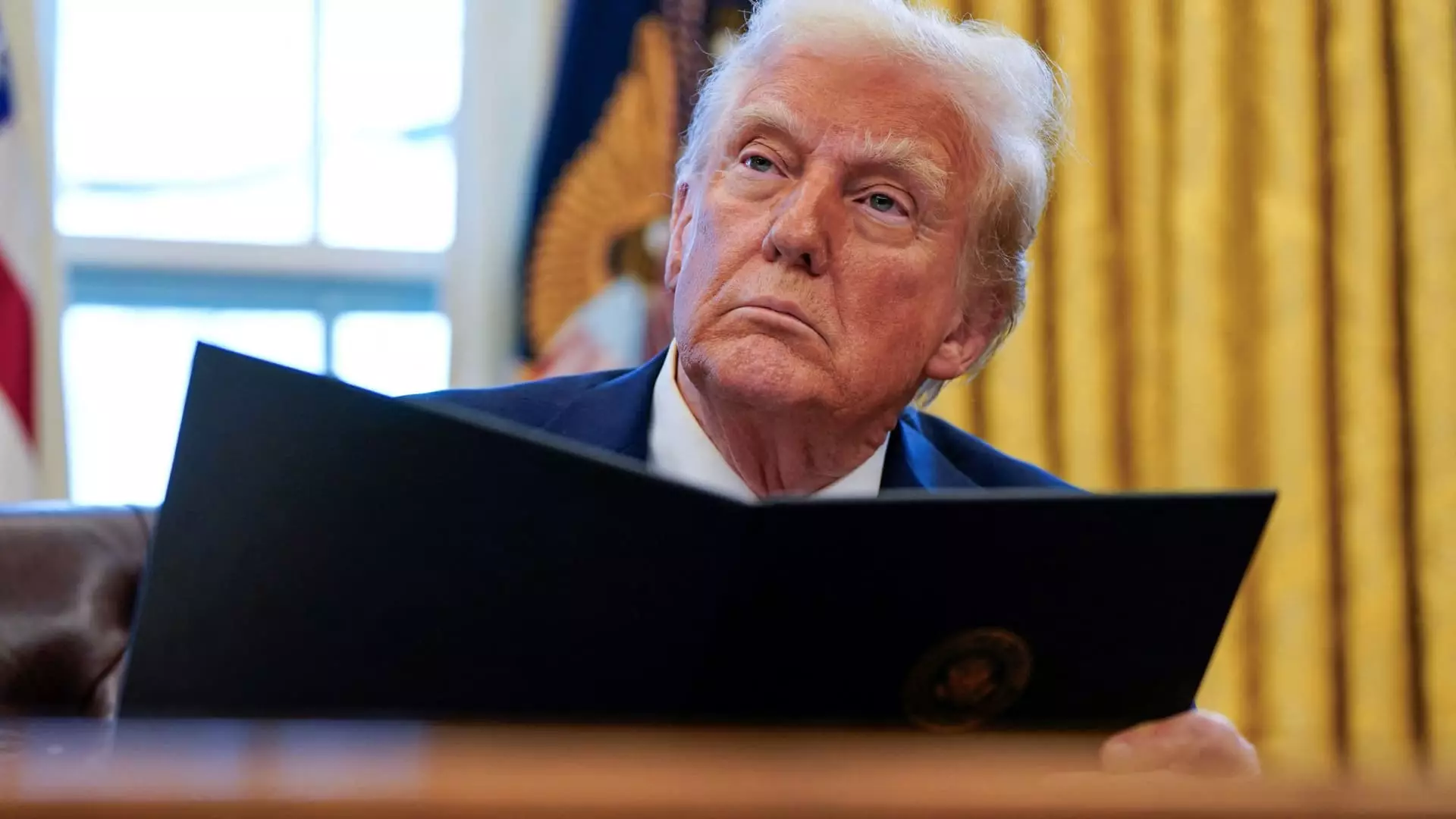In a pivotal move that has stirred significant market reactions and policy discussions, the White House confirmed the imposition of aggressive tariffs by President Donald Trump against major trading partners, notably Canada, Mexico, and China. This revelation followed weeks of speculation within economic circles and was officially communicated by White House Press Secretary Karoline Leavitt. With 25% tariffs on Canada and Mexico, along with a 10% duty on imports from China, Trump’s administration aims to tackle the pervasive issue of illegal drug trafficking, specifically fentanyl, reportedly sourced from these nations.
The announcement had an immediate impact on the financial markets, evidenced by a downward trend in the Dow Jones Industrial Average, which fell over 300 points, equating to a near 0.7% drop. The S&P 500 and Nasdaq Composite indexes similarly ended in the red after experiencing an earlier surge, indicating a noticeable volatility in investor sentiment. Such patterns reveal a broad anxiety regarding the economic implications of tariff impositions on international trade relations and domestic markets. Importantly, the backdrop for these tariffs comes at a time when inflation rates appeared to stabilize, with the Commerce Department revealing a 2.6% inflation increase in December. Economists now face the challenge of predicting the potential ripple effects these tariffs may have on inflationary pressures in a market that is still finding its footing.
Leavitt emphasized that the tariffs are aligned with Trump’s commitment to fulfilling campaign promises aimed at addressing immigration and drug trafficking concerns. This strategy highlights the intricate relationship between economic measures and broader political objectives, where tariffs serve not only as fiscal tools but also as instruments of negotiation in foreign policy. Trump’s administration is keen on leveraging these tariffs to foster compliance from trading partners while attempting to illustrate a tough-on-crime stance in connection to the ongoing opioid crisis. This context is further illuminated by remarks from trade advisor Peter Navarro, who drew a stark parallel between the human toll of fentanyl and the upcoming Super Bowl, an assertion meant to resonate with public sentiments about the drug epidemic facing America.
As analysts scrutinize the effectiveness of these tariffs, a pressing concern emerges regarding their long-term impact. Economists have voiced apprehensions that such protective measures could ignite inflation, complicating the economic landscape that has started to see some relief from escalating prices. Fed officials have advised a cautious approach, highlighting the need for clarity on how these tariffs will be administered and their long-term implications for economic growth and inflation. Fed Governor Michelle Bowman underscored the importance of gaining tangible insights into the implementation of these policies, highlighting the central bank’s role in monitoring economic stability amidst shifting fiscal landscapes.
Chicago Fed President Austan Goolsbee further augmented this discourse by pointing out the critical distinction between whether these tariffs represent isolated incidents or the onset of a trade war with retaliatory measures from affected countries. Such a scenario could potentially exacerbate economic strain and disrupt established trade networks, emphasizing the delicate balance policymakers must maintain in managing domestic and international relationships.
Trump’s aggressive tariff strategy positions itself at the intersection of economic policymaking and political maneuvering, with profound implications for market stability and international relations. The current climate necessitates a careful evaluation of the potential fallout from these tariffs, not just in terms of immediate financial security but also regarding broader economic health and diplomatic relations. The stakes are high, and as financial markets respond to these developments, stakeholders—from investors to policymakers—must remain vigilant in navigating these uncertain waters, assessing both the risks and opportunities presented by Trumps’s latest tariff announcements.


Leave a Reply